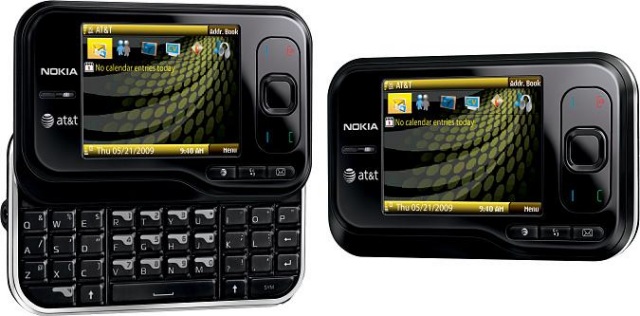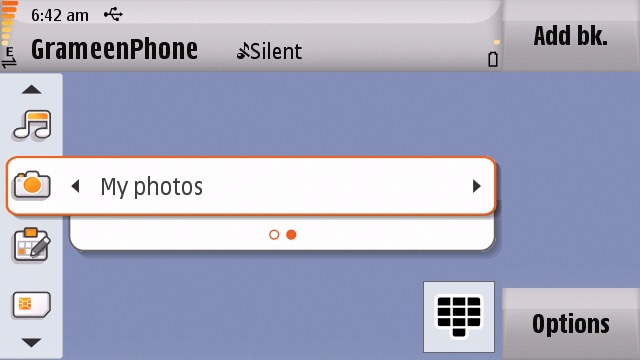First up, those hard limits that Redmond has put in place still give their partners some flexibility, but they are limited to a maximum of six of their own pre-installed applications (which can’t take up more than 60MB of storage); they can change the operator logo; add their own tiles (the Windows Phone 7 equivalent of homescreen widgets) and the default search engine in the browser. Bing remains prevalent in the rest of the code, users will need a Microsoft Live ID, and Redmond will control firmware updates.
(There are also some certification issues which mean you need to be running on Microsoft-approved hardware for the OS to run, which shouldn’t be an issue for the Open Sourced Symbian OS).
This sort of severe lock down isn't in the Symbian Foundation playbook - once you get the Operating System up and running and the basic UI, then networks and hardware manufacturers can let themselves go with whatever tricks and edits they want to do. With Symbian ^3 on the horizon, the idea of a 'hard' line from Nokia on what networks can or can't do with their hardware is never going to happen. It never happened in the past when the telecom world was a much more closed platform, and now with the new OS ready to debut it might be that we can solve the patchy firmware upgrades and carrier customisations in the same move.
Historically, one of the issues that seems to annoy a lot of Symbian users (especially Nokia owners) is the mish-mash of firmwares, applications and interfaces that you might see on a Symbian device - and the haphazard way that firmware updates make their way around the world as witnessed this week with the slow percolation of the new 5800 v50 firmware. With hardware manufacturers traditionally servicing only a handful of customers in the network operators in each country, the networks were able (and still are to a certain extent) to ask for wholesale alterations to the device.

It might just be a change to the visual theme to match the network colours that Vodafone like to do, or it could be something a bit more restrictive, such as the removal of VOIP software from the Orange version of the N95. There are well known cases where the firmware is changed to such a huge degree that users of the plain vanilla device are shocked at the instability and third party crud added by networks (pretty much any S60 device sold by AT&T, famously the E62 which was so different from the E61 that it needed a new number).
So in some respects I love the Microsoft approach – it’s also similar to that of Apple when the iPhone was hawked around the Pavlovian network buyers willing to sell exactly the same model, at the same price, as a competing network after the exclusivity clause ran out. But this is a simple answer to a complicated problem, and the simple answer is not quite right.
The locked down solution might work for specialist phones or those that push a message of conformity to their way of thinking [differently] around the planet, but the real world is a more rough and tumble, high volume place to be. Networks need to have differentiation in look and feel, they need to have additional software and services to compete in the new connected world – they're not going to let Ovi be the only door to your social graph in the room.

What’s needed in the new Symbian^3 and ^4 devices is for the networks to implement their customisations in a sensible and similar way across all the carriers and hardware variants. The majority of changes the networks wish to do are already available in software to any end user – Nokia have been pushing the idea of personalisation of handsets for many years in S60 with ringtones, themes now easily available from third party developers via the Ovi Store or direct download and installation from the developer's website. These elements are all going to be present in the new OS so why not use the software that has been developed for the device? The software that allows you to customise the handsets to have the feature set you want to market, while not negatively affecting the end-user experience, and ultimately lets you maximise the engagement with your customers in a positive way?
Yes it means loosening up on a potential lock-in with your customers in terms of software and support, but the thinking and benefits work both ways. If you don't go down this route, power users are either going to be buying unlocked handsets because they are open (so you lose a sale), or are going to hack the phones with product codes to get the vanilla firmwares (potentially causing a headache for your network software). So networks gain by staying open.
As to the majority of end users, the idea of updating a phone’s software (i.e. firmware) is becoming more prevalent and established. By putting roadblocks in the way you create more work for your support desks; more unhappy users; and a poor experience, which could well affect your retention rates.
If Symbian^3 does nothing more than create a more “standard” approach to the baseline operating system and reduces the interference at the firmware level in exchange for more customisation at the UI and applications level, then it will be a good move for the industry as a whole.
-- Ewan Spence, April 2010.
